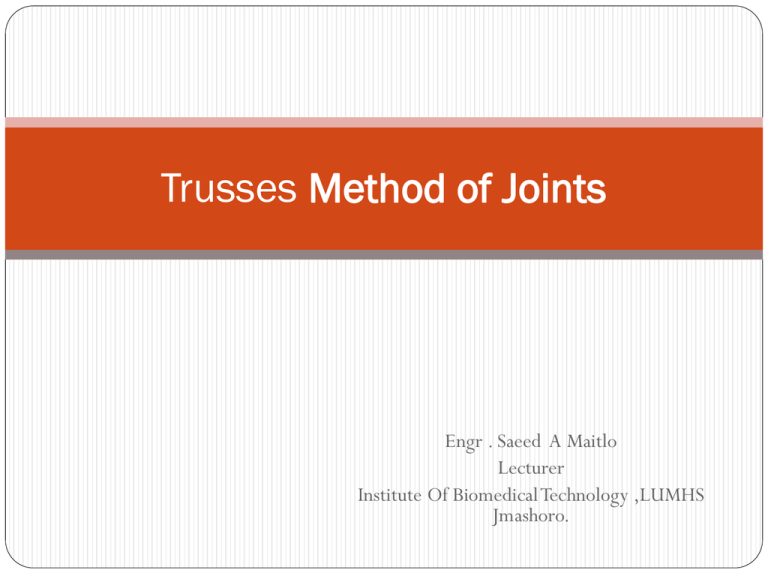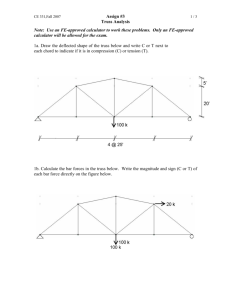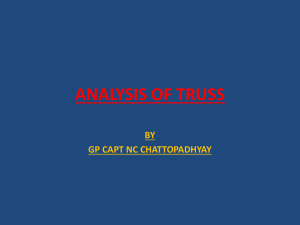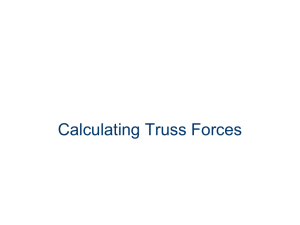Method of Joints
advertisement

Trusses Method of Joints Engr . Saeed A Maitlo Lecturer Institute Of Biomedical Technology ,LUMHS Jmashoro. What is a truss. A truss is an assembly of linear members connected together to form a triangle or triangles that convert all external forces into axial compression or tension in its members. A rigid framework, as of wooden beams or metal bars, designed to support a structure, such as a roof. Method of Joints If a truss is in equilibrium, then each of its joints must also be in equilibrium The method of joints consists of satisfying the equilibrium conditions for the forces exerted “on the pin” at each joint of the truss Method of Joints If a truss is in equilibrium, then each of its joints must be in equilibrium. The method of joints consists of satisfying the equilibrium equations for forces acting on each joint. ∑ Fx = 0 ∑Fy = 0 Method of Joints Recall, that the line of action of a force acting on a joint is determined by the geometry of the truss member. The line of action is formed by connecting the two ends of each member with a straight line. Since direction of the force is known, the remaining unknown is the magnitude of the force. Joint A Joint B Tension Force Joint B Joint A Compression Force Method of Joints Upper Cord members Verticals Diagonals Lower Cord Members Method of Joints Gusset Plate Weld Idealized joint – members connected by a frictionless pin Method of Joints Upper chord in compression Lower chord in tension This is a Pratt truss Upper chord in compression Lower chord in tension This is a Howe truss



